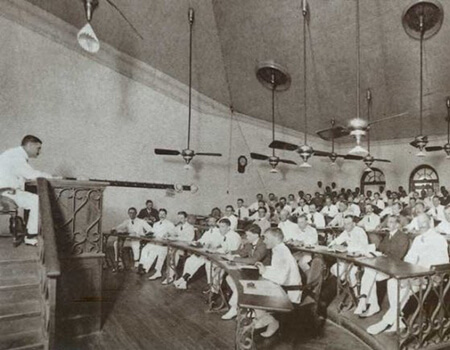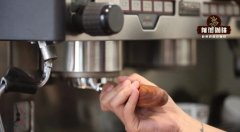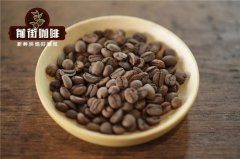The Development Story of Tea auction House in Colombo, Sri Lanka what tea brands in Colombo are delicious but not expensive
Today, there are about 690 tea companies registered in Sri Lanka, only 8 approved tea brokerage companies and 450 export companies, of which 70,80 buyers are often active in auction houses. Colombo Tea auction House sells an average of 6000 tons of tea a week, even more than 8000 tons in the peak season of tea production. At the same time, 4000 to 5000 tons of tea are delivered from the tea production area to the warehouse of Colombo sellers every day. Therefore, Colombo Tea auction House is considered to be the largest tea auction house in the world.
According to the data provided by the Sri Lankan Tea Bureau, Sri Lanka produces 330000-340000 tons of tea every year and exports 320000 tons. In addition to domestic consumption of more than 10,000 tons, almost 95% of tea is sold through auction houses. In 2010, tea exports reached US $1.5 billion, second only to clothing exports (US $3 billion). Tea has become the second largest pillar of Sri Lanka's economy. The Sri Lankan government has been promoting tea exports for more than a decade, reaching US $15.1 billion in 2011, 1.387 billion in 2012, 1.396 billion in 2013 and 1.49 billion in 2014.
In the process of tea auction, brokerage companies play a very important intermediary role between producers and exporters. When the tea farm produces a batch of tea, the waybill will be sent to the Colombo brokerage company, which will sample, review and classify it, and compile a detailed "catalogue" to feed back to the manufacturer and listen to the manufacturer's opinion. Brokers then distribute these samples and "catalogs" to buyers, sometimes as many as hundreds of buyers.
The number of tea leaves for auction each week usually reaches 7000,000. This makes the workload of brokerage firms very heavy, with 14,000 to 20,000 samples taken and provided to buyers each week, while exporters or buyers review 10,000 tea samples per week. If the auction is successful, the manufacturer will receive the payment in seven days.
With the continuous increase of planting area and output of Ceylon tea, the number of tea auctioned is also gradually increasing. In 2013, celebrating the 130th anniversary of Colombo auction house, 8124 tea leaves, totaling 6400 tons, were auctioned in one day. Colombo Tea auction House holds the highest auction record of 12000 teas a day, totaling 8000 tons, making it the highest single auction record in a single day in the world. The results of tea auctions on Tuesdays and Wednesdays will become the weather vane of the price in the international tea market.
Only by participating in the auction can we understand the changes in the quality and price of tea.

Before the independence of Sri Lanka, all the people gathered here were British and Dutch, and the local Ceylon were not qualified to participate.
It was not until June 1, 1945, when PSararanamuttu, the tea official of the Ceylon government, persuaded the British to train local Ceylon to become tea commentators that three Ceylon were finally selected. When they first appeared at the auction house, it was said that even the waiters at the auction house looked down on them, providing tea and pastry services to the British and ignoring them.
In 1950, under pressure from the Ceylon government, the British selected six more Ceylon tea commentators to learn tea tasting skills. Mr. Mlier Fernando, one of them, still clearly remembers a British tea critic satirizing him: "you eat too much curry, which destroys your taste buds!"Today, the people working in the lobby of Colombo Tea auction House are all Sri Lankans like Mr. Fernando.
Sri Lankan tea auction system is considered to be a very successful tea trading system. Today's Colombo Tea auction House operates in accordance with a set of relevant regulations formulated by the Colombo Tea traders Association. The participants in the auction are mainly sellers, brokers and buyers.
The sellers are tea producers such as tea planting companies and tea farms. Buyers are exporters, trading companies, tea sales companies and so on. A brokerage is an intermediary that is responsible for contacting buyers and sellers. Sellers, brokers and buyers, plus warehousing companies, transportation companies, packaging materials suppliers and so on constitute the whole industry chain of tea sales.
Colombo Tea traders Association was established on August 9, 1894, its purpose is to promote the common interests of tea buyers and sellers, and maintain the reputation of Colombo tea market. With the support of Ceylon Chamber of Commerce, the Association has formulated and implemented relevant regulations and supervision systems on tea trade affairs, and correctly and effectively managed Colombo Tea auction House. The Colombo Tea traders Association Committee is composed of 10 members, including 5 seller members and 5 buyer members. The association now has 217 members, composed of buyers, sellers, brokers, service support companies and honorary members.
Important Notice :
前街咖啡 FrontStreet Coffee has moved to new addredd:
FrontStreet Coffee Address: 315,Donghua East Road,GuangZhou
Tel:020 38364473
- Prev

The knowledge course of Italian Coffee-the effect of cloth Powder on extraction
In the extraction of espresso, the same extraction parameters are sometimes found to be unstable, and espresso liquid gushes out of control. The instability of flow velocity is probably due to the channel effect. In general, water is inert and will choose a path with less resistance. When the density of the coffee powder layer is uneven, the water will move towards the place with relatively low density.
- Next

Premium Coffee beans-SCAA Fine Bean grading system
The new premium bean grading system of the American Fine Coffee Association (SCAA) has been adopted by the American Coffee quality Association (CQI) in recent years. Raw bean standard: 350 grams of raw beans should be sampled with a water content of 10% 12%. Raw beans must not have an indecent smell. The number of raw bean size must be equal, and the size difference rate shall not exceed 5% of the size stated in the contract. The number of defective beans can be divided into first-class defects.
Related
- Beginners will see the "Coffee pull flower" guide!
- What is the difference between ice blog purified milk and ordinary milk coffee?
- Why is the Philippines the largest producer of crops in Liberia?
- For coffee extraction, should the fine powder be retained?
- How does extracted espresso fill pressed powder? How much strength does it take to press the powder?
- How to make jasmine cold extract coffee? Is the jasmine + latte good?
- Will this little toy really make the coffee taste better? How does Lily Drip affect coffee extraction?
- Will the action of slapping the filter cup also affect coffee extraction?
- What's the difference between powder-to-water ratio and powder-to-liquid ratio?
- What is the Ethiopian local species? What does it have to do with Heirloom native species?

